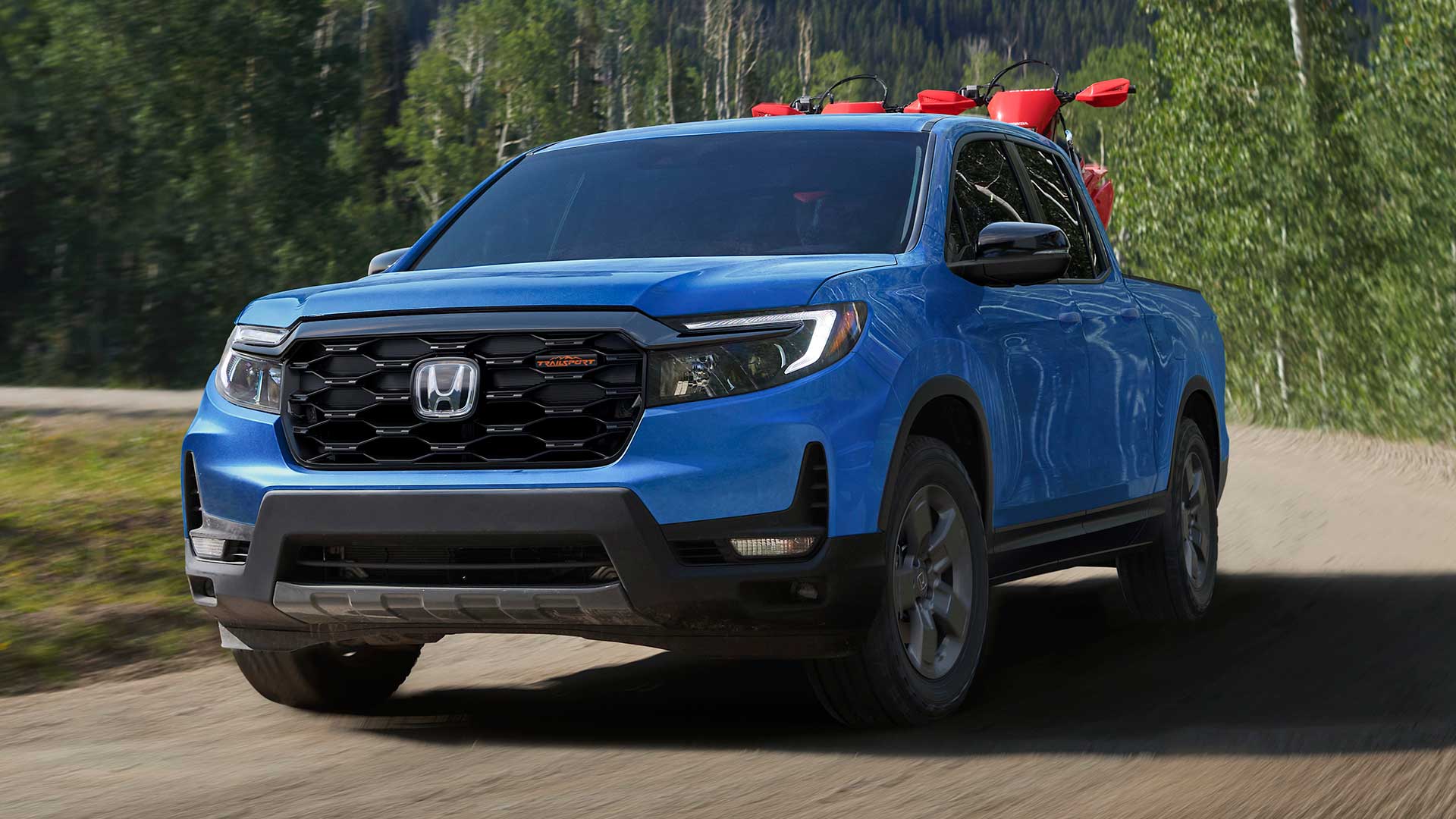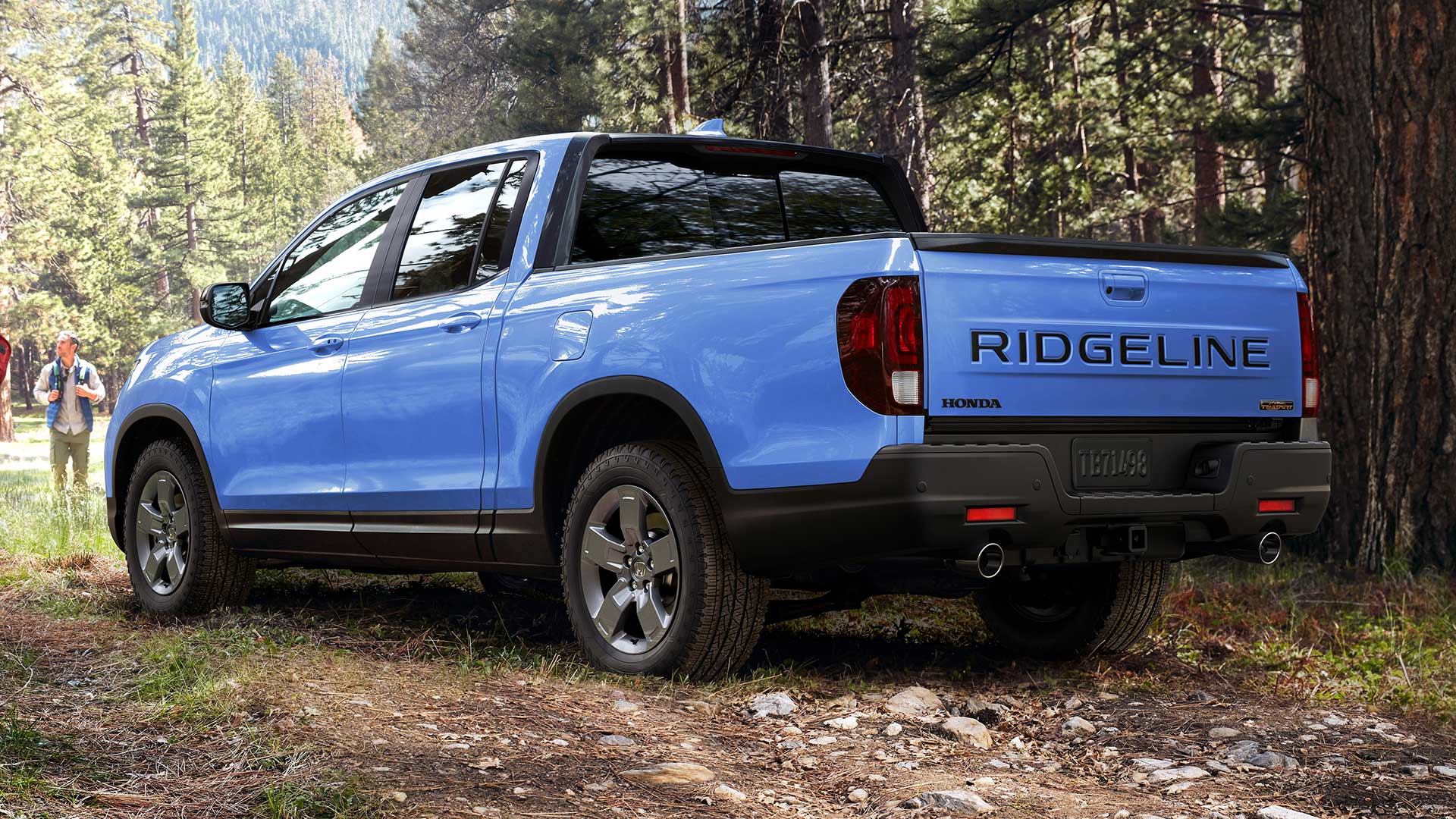2016 Mazda CX-3
As crossover utilities shrink ever smaller, they’re looking less like a blend of family car and a SUV, and more like pumped five-door hatchbacks with available all-wheel drive. Case in point, this Mazda CX-3. It’s a good looking subcompact ute. But, in its quest for popular style, is utility no longer its strongest point?
To their credit, Mazda calls the 2016 CX-3 their ultimate “urban escape vehicle”. A combination of small car attributes necessary for city-dwellers; like a Mazda3 hatchback; with enough crossover elements for weekend adventures and all-weather security.
Going up against the likes of Honda HR-V, Fiat 500X, Jeep Renegade, and Chevrolet Trax; four subcompact utes that weren’t even available here a year ago, gives you an idea of how rapidly this segment is expanding.
Built on a new SKYACTIV chassis to be shared with the next Mazda2, the CX-3 is tidy indeed. Every interior dimension is less than the Mazda3. And while outside it is certainly taller, ground clearance is the same at 6.1-inches.
Of course you can’t get all-wheel-drive in the Mazda3.
Now whether all-4 or just the front-2 wheels are in play, power comes from the MX-5’s SKYACTIV-G 2.0-liter I4. Here putting out 146-horsepower and 146 lb-ft. of torque, with a 6-speed automatic transmission your only option.
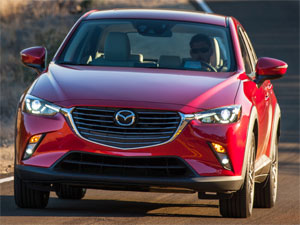 One thing is clear, and that is that the CX-3 is easily the most stylish of the new breed of cute utes. It looks long, low, lean, and much more muscular than bigger brother CX-5.
One thing is clear, and that is that the CX-3 is easily the most stylish of the new breed of cute utes. It looks long, low, lean, and much more muscular than bigger brother CX-5.
In the front, the face is familiar Mazda territory, but they seem to be pushing the boundaries of the grille ever farther. And the slanted rear roof, with tight hind quarters, doesn’t help much with convincing us that this is a crossover and not a hatchback.
At our test track, there was a snappy throttle and eagerness at launch, but the CX-3 runs out of steam fairly quickly; taking us 8.6-seconds to hit 60. To be fair, that’s on par with the Jeep Renegade we tested. And, the CX-3 gives you all it’s got down the strip sounding good while doing it.
Shifts are prompt and positive, and there was even a touch of torque steer as we worked our way to a 16.7-second ¼-mile at 83 miles-per-hour.
Throughout handling exercises, there was certainly a fun, sporty Mazda-style character. But, while still far from a sports car, there’s a nice balance and steering response is quick, putting most other tiny trucksters to shame.
We were expecting a little more from the brakes however, than a 133-foot stopping average from 60 and an overall soft feel.
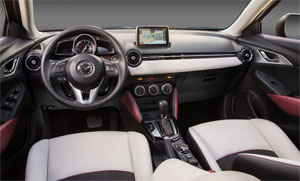 Fittingly, the interior is driver-oriented, with an almost premium feel to materials and surfaces that again put it above most rivals. The control layout looks simple enough, yet still managed to befuddle some of our staffers.
Fittingly, the interior is driver-oriented, with an almost premium feel to materials and surfaces that again put it above most rivals. The control layout looks simple enough, yet still managed to befuddle some of our staffers.
Ergonomics are also not great for full-size adults; plus we found console space minimal and cup holders difficult to access easily. Moreover, it can be at times a very noisy environment.
Continuing our list of gripes, cargo space is minimal, just 10.1 cubic-ft. behind the rear seats if there’s a Bose subwoofer in place; that’s ½ the space of a Mazda3 hatchback. Folding the seats expands the space, getting the numbers closer to the Mazda3’s at 44.5 cubic-ft.
The load floor is also very high. It might not have been as noticeable had we not had an HR-V in at the same time which has a much lower load floor and double the amount of rear cargo space.
Government Fuel Economy Ratings for an all-wheel-drive CX-3 are 27-City, 32-Highway, and 29-Combined, which we almost reached at 28.8 miles-per-gallon of Regular. So the Energy Impact Score is much better than average, with oil consumption at 11.4-barrels yearly and CO2 emissions of 5.0-tons.
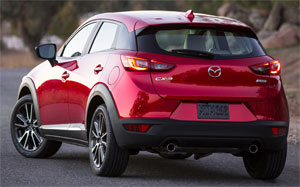 Pricing starts at $20,840; and since we’re doing so much comparing here, a Mazda3 starts about a grand lower, though top Grand Touring trims are priced very similar.
Pricing starts at $20,840; and since we’re doing so much comparing here, a Mazda3 starts about a grand lower, though top Grand Touring trims are priced very similar.
In the end, we know why Mazda commissioned the CX-3. Everything crossover is selling like mad while traditional car sales continue to sag. Still, when it comes to actual utility, a well done compact five-door hatchback, like a Mazda3, Ford Focus, or the new Honda Civic, beats the CX-3, and all other tiny utes, in everything except traction.
But, if you gotta hang with the crowd, then the 2016 Mazda CX-3 is one fun, city size utility, that’s rarin’ to go.
Specifications
- Engine: 2.0 liter
- Horsepower: 146
- Torque: 146 lb-ft.
- 0-60 mph: 8.6 seconds
- 1/4 mile: 16.7 seconds @ 83 mph
- EPA: 27 mpg city/ 32 mpg highway
- Energy Impact: 11.4 barrels of oil/yr
- CO2 Emissions: 5.0 tons/yr
2024 Honda Ridgeline TrailSport
It Does Truck-Like Things Better Than Ever
Honda brought something truly unique to the pickup truck scene when their mid-size Ridgeline debuted for 2006. In 2017, it moved towards becoming a little more true truck-like, both in form and capability, now with yet another step in that direction for 2024. So, let’s see if the Ridgeline is really hitting its stride.
For 2024, it’s all about making this Honda Ridgeline better than ever. There are styling tweaks outside, along with tech and functional improvements inside, but the biggest news is the Ridgeline has now joined Honda’s TrailSport family of off-road inspired vehicles. This more-true-trucklike, second-gen Ridgeline been around since 2017, receiving periodic updates over the years; but joining the TrailSport family is the biggest leap yet.
Primarily, the TrailSport transformation includes General Grabber all-terrain tires, mounted on new Pewter Gray 18-inch wheels, steel underbody protection, and retuning the strut front, and multi-link rear suspension for added wheel articulation. And while we always appreciate the additional traction of off-road tires, the Ridgeline’s standard i-VTM4 all-wheel drive, with Intelligent Traction Management and snow, sand, and mud settings, was already quite capable of handling all but the most extreme off-roading, ground clearance of just 7.6 inches being it’s only real hinderance.
A 3.5-liter V6 remains under the hood as it has since the Ridgeline debuted for 2006; the current version outputs 280 horsepower and 262 lb-ft of torque, plenty enough muscle to handle its 5,000-lbs. towing capacity. A nine-speed automatic transmission with paddle shifters and bevy of push and pull buttons on the console replaced the six-speed automatic back in 2020.
In addition to adding TrailSport capability, a big focus for this update was making it more user-friendly inside, starting with the central touchscreen growing from 8 to 9 inches. It also gets faster processing speeds, menus have been simplified, and the native navigation system is improved with better graphics. It’s accompanied by a new digital instrument cluster, along with an upgraded center console with more storage space. Unique TrailSport touches include heavy duty floormats, leather-trimmed seats, orange stitching throughout the cabin, and orange ambient lighting.
The Ridgeline continues to offer things available nowhere else in the pickup truck market.
Exterior styling doesn’t exactly shout “macho big rig coming your way,” but the more vertical face and larger grille that arrived for 2021, along with this year’s added TrailSport elements, do continue to toughen up the Ridgeline’s image. The 5’4” bed remains highly functional with no large wheel well intrusions, multiple tie-downs points, lighting and even speakers. And of course, the Ridgeline continues to offer things available nowhere else in the pickup truck market, like the dual-action tailgate, and large, lockable, drainable, underbed storage. Not to mention being able to drive around in true car-like comfort, something we took full advantage of on our way to our Mason Dixon Dragway test track.
There was great grip off the line, with full power arriving smoothly but quickly, helping us to get to 60 in 7.0 seconds flat, a tenth quicker than the last Ridgeline we tested. That power delivery stayed fairly consistent the whole way down the track, barely interrupted by the nine-speed automatic’s smooth shifting. Our best quarter-mile run was 15.5 seconds at 90 mph.
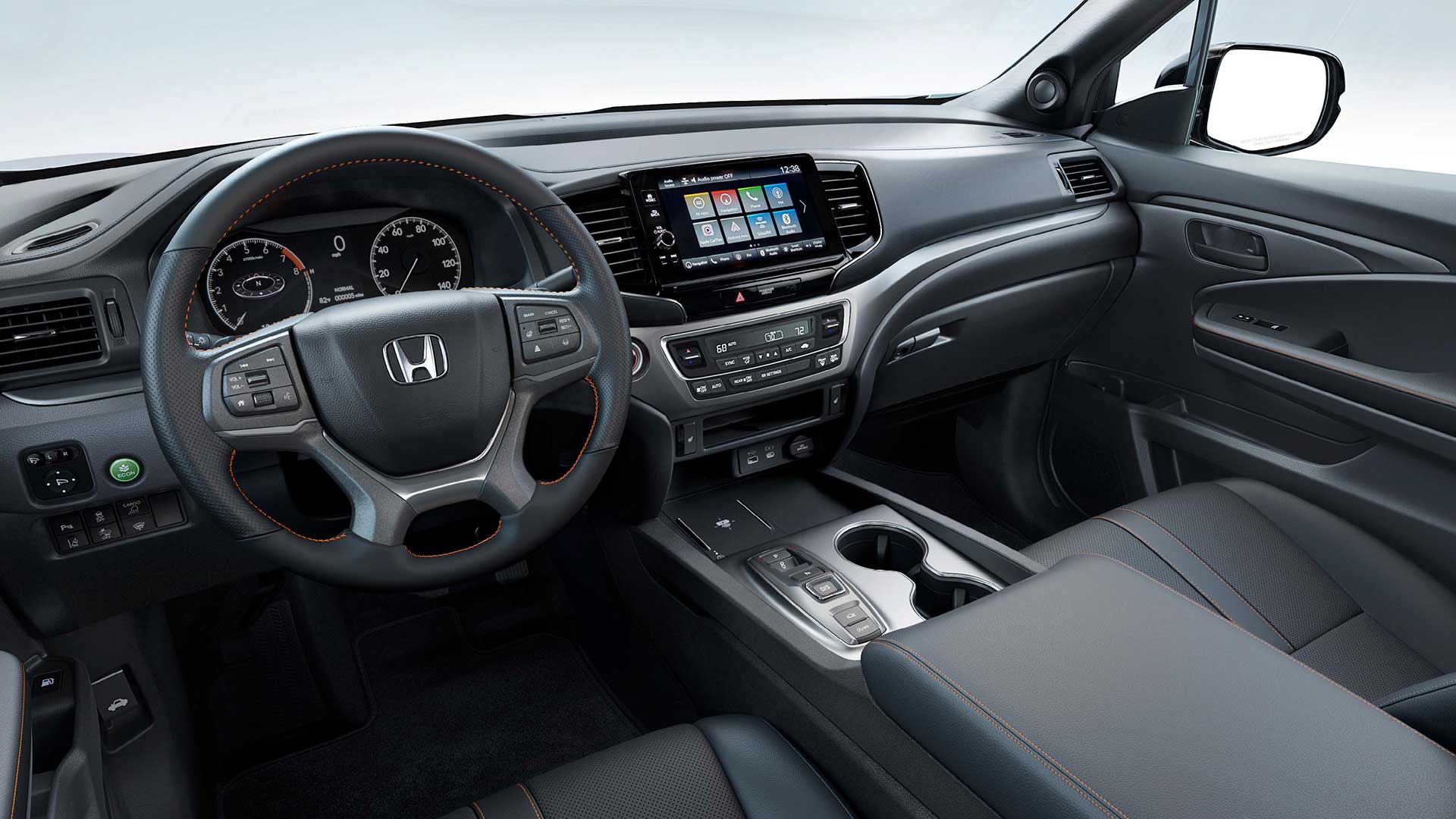
The revised suspension and knobbier tires didn’t really seem to add or detract from handling prowess, as it felt as solid, nimble, and car-like as it always has through our cone course. Perhaps a little less stiff than before, but good feedback, tight steering, and minimal body roll for a pickup, made for a very confidence inspiring experience. In our braking test, we stopped in a respectable average of 123 feet from 60, with only moderate amounts of nosedive and good feel through the pedal.
There is, however, a slight reduction in Government Fuel Economy Ratings with the all-terrain tires; 18-City, 23-Highway, and 20-Combined, our average, right on, at 20.4 mpg of Regular. That’s a slightly below average Energy Impact Score of 14.9 barrels of yearly oil use, with CO2 emissions of 7.4 tons.
TrailSport pricing falls in line just under the Ridgeline’s top Black Edition trim with a starting price of $46,375, about five grand over a base Ridgeline Sport.
So, whether you consider the Honda Ridgeline to be a “real” truck or not, this ruggedly smooth 2024 TrailSport does truck-like things better than ever. And we’re not just talking about the slight upgrade in off-road performance, we’re talking about a flexible bed to help you get chores done, and the ability to tow or haul with comfort and flexibility other trucks can only wish for. It’s why the Ridgeline brings more first-time buyers to Honda than any other vehicle, and why it continues to be a great choice in the growing midsize truck realm.
Specifications
- Engine: 3.5-liter V6
- Transmission: 9-speed automatic
- Horsepower: 280
- Torque: 262 lb-ft
- EPA: 18 City | 23 Highway | 20 Combined
- 0-60 mph: 7.0 seconds
- 1/4 Mile: 15.5 seconds at 90 mph
- 60-0 Braking (avg): 123 feet
- MW Fuel Economy: 20.4 mpg (Regular)
- Max Towing Capacity: 5,000-lbs








